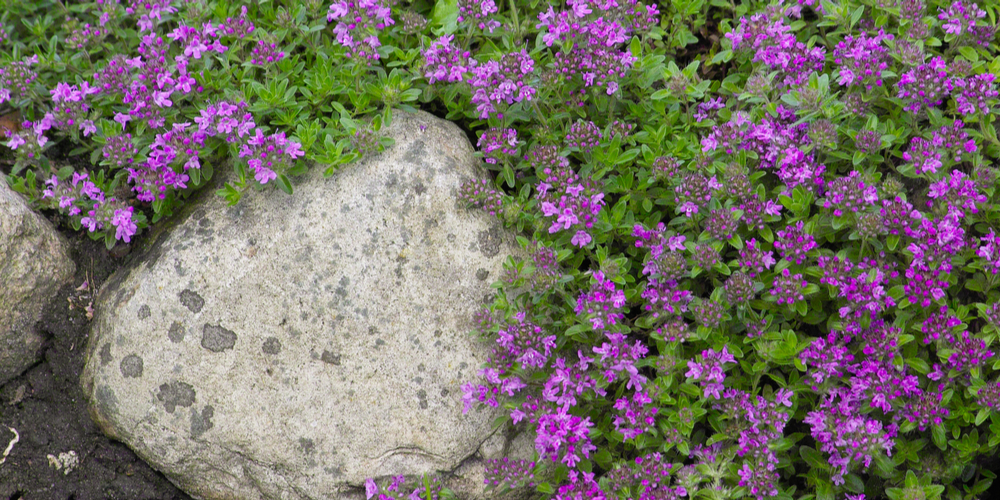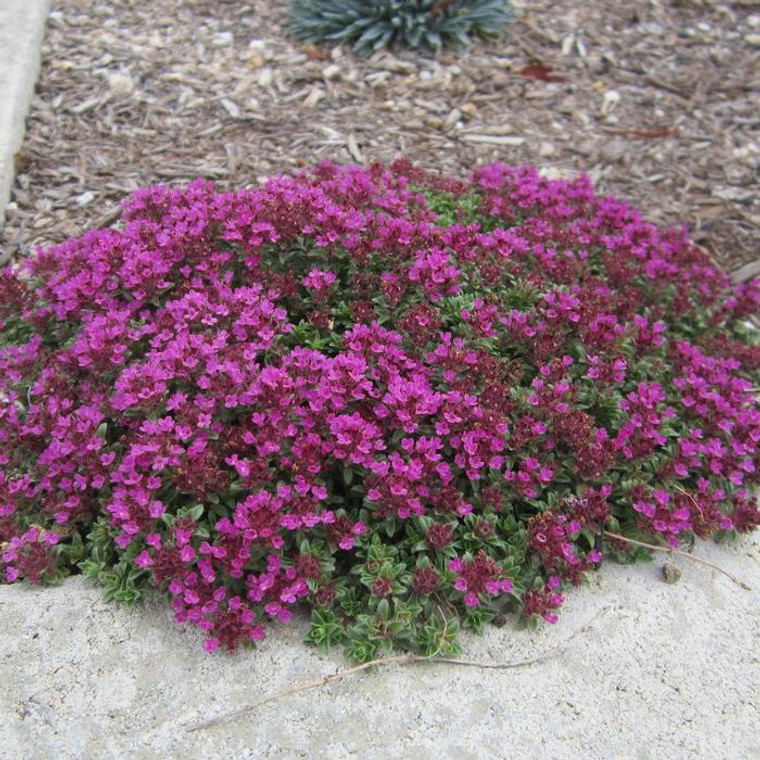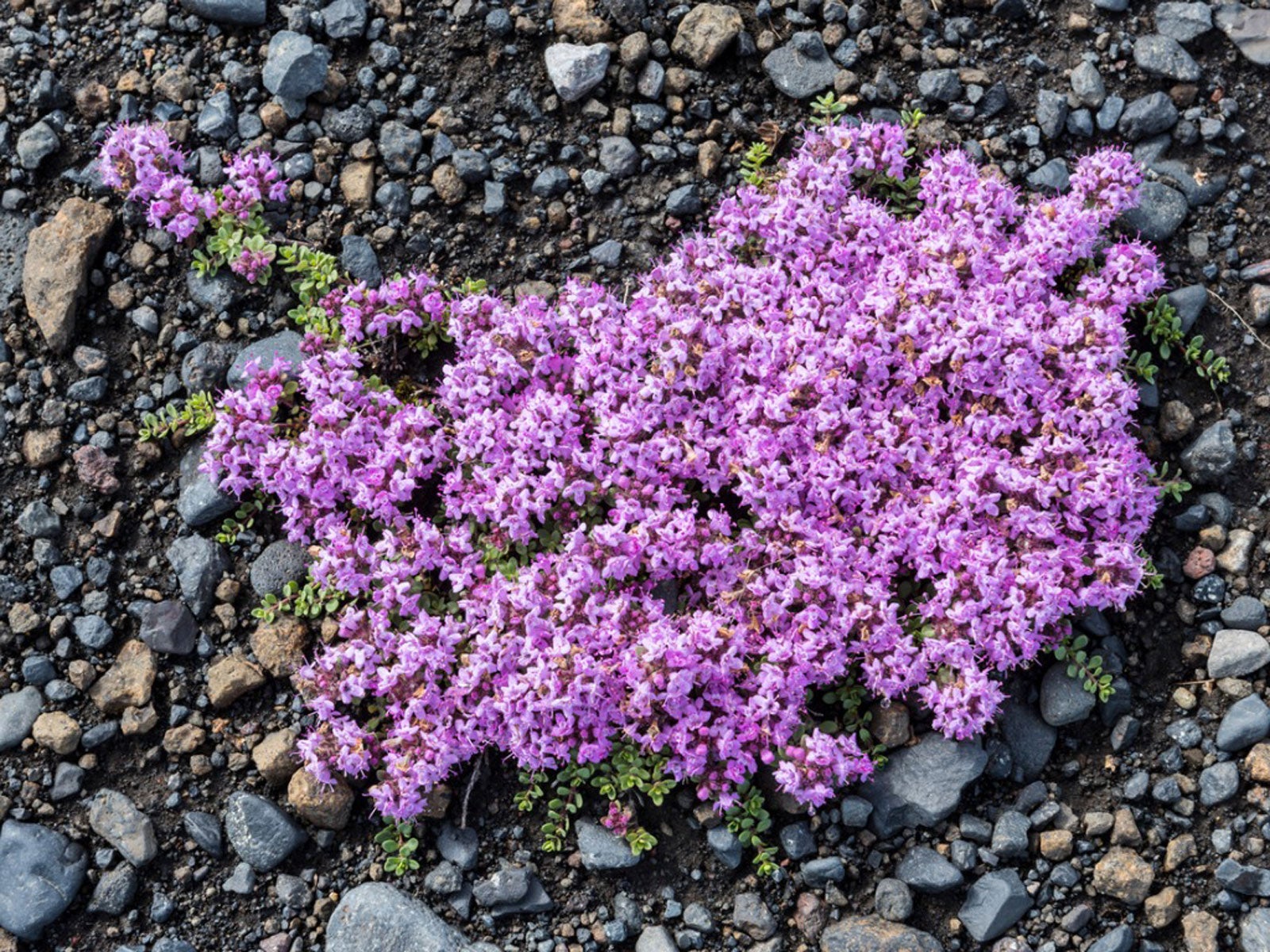Uncovering the Natural Habitat of Red Creeping Thyme
Red creeping thyme, a low-growing, spreading ground cover, has been a popular choice for gardeners and chefs alike due to its fragrant leaves and versatile uses. But have you ever wondered where this herb originates from? Understanding the native habitat of red creeping thyme is essential to appreciating its unique characteristics and growth requirements. Native to the Mediterranean region, red creeping thyme thrives in areas with dry summers and mild winters, making it an ideal choice for gardeners in similar climates. By exploring the herb’s natural environment, we can gain a deeper understanding of how to replicate its native habitat in our own gardens, ensuring optimal growth and flavor.
The Mediterranean region, which includes countries such as Spain, France, Italy, and Greece, provides the perfect conditions for red creeping thyme to flourish. The region’s dry summers and mild winters allow the herb to conserve water and energy, making it an ideal choice for areas with similar climate conditions. In its native habitat, red creeping thyme can be found growing in rocky crevices, along hillsides, and in dry meadows, where it has adapted to the poor soil conditions and intense sunlight.
By understanding the native habitat of red creeping thyme, gardeners can better appreciate the herb’s unique characteristics and growth requirements. For example, red creeping thyme requires well-draining soil and full sun to partial shade, making it an ideal choice for areas with poor soil conditions. Additionally, the herb’s low-growing habit and spreading nature make it an excellent choice for ground cover or container gardens.
Whether you’re a seasoned gardener or a culinary enthusiast, understanding the native habitat of red creeping thyme can enhance your appreciation and use of this fragrant herb. By replicating the herb’s natural environment in your own garden, you can ensure optimal growth and flavor, making it a valuable addition to your culinary creations.
How to Identify Red Creeping Thyme’s Native Region
To understand where red creeping thyme is native to, it’s essential to explore the geographical region that provides the perfect conditions for its growth. The Mediterranean region, which spans across southern Europe, North Africa, and parts of Western Asia, is the native habitat of red creeping thyme. This region is characterized by a Mediterranean climate, with dry summers and mild winters, making it an ideal environment for the herb to thrive.
The Mediterranean region’s unique combination of climate, soil, and topography creates a diverse range of ecosystems that support the growth of red creeping thyme. The region’s dry summers, with average temperatures ranging from 65°F to 85°F (18°C to 30°C), allow the herb to conserve water and energy. The mild winters, with average temperatures ranging from 40°F to 60°F (4°C to 15°C), enable the herb to grow and flourish during the cooler months.
The soil conditions in the Mediterranean region are also well-suited for red creeping thyme. The herb thrives in well-draining soil with a pH range of 6.0 to 7.0, making it an ideal choice for areas with poor soil conditions. The region’s topography, with its rolling hills, rocky outcrops, and dry meadows, provides the perfect environment for red creeping thyme to grow and spread.
By understanding the geographical region where red creeping thyme is native to, gardeners and chefs can better appreciate the herb’s unique characteristics and growth requirements. Whether you’re looking to grow red creeping thyme in your garden or use it in your cooking, knowing its native habitat can help you replicate the conditions that allow it to thrive.
The Mediterranean Roots of Red Creeping Thyme
Red creeping thyme is native to the Mediterranean region, where it can be found growing wild in many countries, including Spain, France, Italy, and Greece. This region provides the perfect conditions for the herb to thrive, with its dry summers and mild winters allowing red creeping thyme to conserve water and energy.
In Spain, red creeping thyme is commonly found in the mountainous regions of the Pyrenees and the Sierra Nevada, where it grows in rocky crevices and dry meadows. In France, the herb is found in the southern regions of Provence and the Côte d’Azur, where it is often used in traditional cooking and herbal remedies.
In Italy, red creeping thyme is widely cultivated in the regions of Tuscany and Umbria, where it is used to flavor a variety of dishes, including soups, stews, and sauces. In Greece, the herb is found in the mountainous regions of the Peloponnese and Crete, where it is often used in traditional medicine and cooking.
Red creeping thyme has adapted to the Mediterranean region’s dry summers and mild winters, developing a range of strategies to conserve water and energy. The herb’s small leaves and stems are covered in tiny hairs, which help to reduce water loss and protect the plant from extreme temperatures.
The Mediterranean region’s unique combination of climate, soil, and topography has also influenced the flavor and aroma of red creeping thyme. The herb’s fragrance is often described as pungent and earthy, with a slightly minty flavor that is characteristic of the Mediterranean region.
By understanding the Mediterranean roots of red creeping thyme, gardeners and chefs can better appreciate the herb’s unique characteristics and growth requirements. Whether you’re looking to grow red creeping thyme in your garden or use it in your cooking, knowing its native habitat can help you replicate the conditions that allow it to thrive.
Red Creeping Thyme’s History of Cultivation and Trade
Red creeping thyme has a rich history of cultivation and trade, dating back to ancient times. The herb was highly valued for its medicinal and culinary properties, and was widely traded throughout the Mediterranean region. In ancient Greece and Rome, red creeping thyme was used to flavor food and drinks, and was also used in traditional medicine to treat a range of ailments.
As the Roman Empire expanded, red creeping thyme was introduced to new regions, including Europe and North Africa. The herb became a popular ingredient in many traditional dishes, including soups, stews, and sauces. In the Middle Ages, red creeping thyme was used in traditional medicine to treat a range of ailments, including fever, coughs, and sore throats.
During the Renaissance, red creeping thyme became a popular ingredient in many European cuisines, including French, Italian, and Spanish cooking. The herb was highly valued for its flavor and aroma, and was used to flavor a range of dishes, including meats, vegetables, and soups.
In the 19th century, red creeping thyme was introduced to the United States, where it became a popular ingredient in many American cuisines. The herb was highly valued for its flavor and aroma, and was used to flavor a range of dishes, including soups, stews, and sauces.
Today, red creeping thyme is grown and traded worldwide, and is a popular ingredient in many cuisines. The herb is highly valued for its flavor and aroma, and is used to flavor a range of dishes, including meats, vegetables, and soups. Whether you’re a gardener, chef, or simply a lover of herbs, understanding the history of red creeping thyme’s cultivation and trade can help you appreciate the beauty and uniqueness of this fragrant herb.
What Makes Red Creeping Thyme Thrive in its Native Habitat
Red creeping thyme is a hardy, adaptable herb that thrives in its native habitat due to a combination of specific conditions. To replicate the herb’s natural environment, it’s essential to understand the factors that contribute to its success. Soil quality, sunlight, and watering are crucial elements that enable red creeping thyme to flourish in its native habitat.
Soil quality is a critical factor in the growth and development of red creeping thyme. The herb prefers well-draining soil with a pH range of 6.0 to 7.0, which allows it to absorb the necessary nutrients and water. In its native habitat, red creeping thyme grows in rocky crevices and dry meadows, where the soil is often poor in nutrients. However, the herb has adapted to these conditions by developing a deep root system that enables it to access water and nutrients deep in the soil.
Sunlight is another essential factor that contributes to the success of red creeping thyme in its native habitat. The herb requires full sun to partial shade, which allows it to photosynthesize and produce the necessary energy for growth and development. In its native habitat, red creeping thyme grows in areas that receive direct sunlight for most of the day, which enables it to thrive.
Watering is also a critical factor in the growth and development of red creeping thyme. The herb requires consistent moisture, especially during the germination and seedling stages. However, it’s essential to avoid overwatering, which can lead to root rot and other problems. In its native habitat, red creeping thyme grows in areas with low rainfall, which has adapted it to conserve water and survive in dry conditions.
By understanding the specific conditions that enable red creeping thyme to thrive in its native habitat, gardeners and chefs can replicate these conditions in their own gardens and kitchens. By providing the right soil quality, sunlight, and watering conditions, you can grow and enjoy this fragrant herb in your own home.
Replicating the Native Habitat in Your Garden
To grow red creeping thyme in your garden, it’s essential to replicate the conditions of its native habitat. This can be achieved by creating a well-draining soil mix, providing full sun to partial shade, and watering consistently. Here are some practical tips and advice on how to create a similar environment in your own garden:
Soil Preparation: Red creeping thyme prefers well-draining soil with a pH range of 6.0 to 7.0. To create a suitable soil mix, combine equal parts of compost, perlite, and vermiculite. This will provide the necessary nutrients and drainage for the herb to thrive.
Companion Planting: Red creeping thyme can be grown alongside other herbs and plants that have similar growing conditions. Some good companion plants include rosemary, lavender, and oregano. These plants will help to create a diverse and thriving ecosystem in your garden.
Pruning: Red creeping thyme requires regular pruning to maintain its shape and promote healthy growth. Prune the herb back to about 6 inches from the ground in the spring, and again in the summer to encourage new growth.
Watering: Red creeping thyme requires consistent moisture, especially during the germination and seedling stages. Water the herb regularly, but avoid overwatering, which can lead to root rot and other problems.
By following these tips and advice, you can create a similar environment in your own garden that will allow red creeping thyme to thrive. With proper care and attention, this fragrant herb will provide you with a bountiful harvest and a beautiful display of color and texture.
Common Challenges and Solutions for Growing Red Creeping Thyme
While red creeping thyme is a relatively easy herb to grow, there are some common challenges that gardeners may face. Here are some solutions to help you overcome these obstacles:
Pests: Red creeping thyme can be susceptible to pests such as aphids, whiteflies, and spider mites. To control these pests, use neem oil or insecticidal soap. You can also introduce beneficial insects such as ladybugs or lacewings to your garden.
Diseases: Red creeping thyme can be prone to diseases such as root rot and leaf spot. To prevent these diseases, make sure to provide good air circulation and avoid overwatering. You can also treat fungal diseases with a fungicide.
Climate Limitations: Red creeping thyme is a Mediterranean herb that thrives in dry summers and mild winters. If you live in an area with extreme temperatures or high humidity, you may need to provide protection for your plants. You can use row covers or bring your plants indoors during the winter months.
Soil Quality: Red creeping thyme prefers well-draining soil with a pH range of 6.0 to 7.0. If your soil is heavy clay or sandy, you may need to amend it with organic matter such as compost or manure.
By understanding the common challenges and solutions for growing red creeping thyme, you can provide the best conditions for your plants to thrive. With proper care and attention, you can enjoy the beauty and fragrance of this lovely herb in your garden.
Conclusion: Appreciating the Beauty of Red Creeping Thyme’s Native Habitat
Red creeping thyme is a fragrant and versatile herb that has been cherished for centuries for its culinary, medicinal, and ornamental value. By understanding the herb’s native habitat and the conditions that allow it to thrive, gardeners and chefs can appreciate the beauty and uniqueness of this lovely herb.
From the Mediterranean region where it is native to, red creeping thyme has been introduced to new regions and has become a popular choice for gardeners and chefs worldwide. Its adaptability to different climates and soil conditions has made it a favorite among herb enthusiasts.
By replicating the native habitat of red creeping thyme in your garden, you can enjoy the beauty and fragrance of this herb in your own home. With proper care and attention, red creeping thyme can thrive in a variety of environments, providing a bountiful harvest of fragrant leaves and stems.
In conclusion, understanding the native habitat of red creeping thyme is essential to appreciating its unique characteristics and growth requirements. By learning about the herb’s history, cultivation, and trade, as well as the conditions that allow it to thrive, you can enhance your gardening and cooking experiences and appreciate the beauty and uniqueness of this fragrant herb.



:max_bytes(150000):strip_icc()/types-of-creeping-thyme-2132329_05-ddf741097eaf4b50992c20fb46800aef.jpg)





